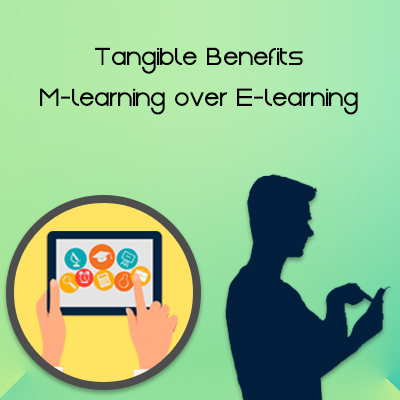Education and training is the process by which the intelligence, knowledge and skills of one generation are passed on to the next. Today there are two forms of learning: traditional learning and distance education, while the latter is in habit from 1828 that was first offered by the University of London. With the advent of World Wide Web in the 1990s and help of already being prevalent computer system, the distance education took his next step – E-learning. The Open University in Britain and the University of British Columbia began a revolution of using the Internet to deliver learning.
With the introduction of smartphones in the 21st decade, education became possible at fingertips. M-Learning or Mobile learning offers convenient ways to support learning process through handheld devices, such as smartphones, and tablet computers.
A study on the current education industry by a global education research firm showed that M-Learning as a Distance learning, particularly App Learning, brought greater benefits over E-learning:
Tangible Benefits M-learning over E-learning

Location and way of learning
• M-learning allows learning at any time, any place, whereas E-learning requires lecture (or instructor) in the classroom
• M-learning allows learning when it is needed, whereas E-learning is scheduled or needs presence in the place
• M-learning delivers more voice, graphics and animation based content, whereas E-learning delivers more text and graphics based content
Instructor to student communication
• M-learning allows the instructor to connect to students or vice-versa via instant delivery of e-mail or SMS about changed or updated content, whereas in E-learning, going through the web browser to check emails is a delayed process
• In M-learning, communication is instant, synchronous, and spontaneous, whereas in E-learning, communication is passive, asynchronous, and scheduled
Student to student communication

• In E-learning, students can connect each other only by audio-teleconference, whereas in M-learning, both audio and video teleconference are possible and feasible
• E-learning allows only e-mail to e-mail communication, but m-learning allows 27/4 instantaneous messaging, in addition to email communication
• E-learning allows interaction only in the classroom, whereas m-learning system doesn’t have any geographic boundary for communication
• In E-learning, it takes time for students to reach the internet facility, whereas in M-learning, internet world is within the palm
• In E-learning, group discussion requires dedicated time slot, whereas in M-learning, group discussion can be on flexible timings (24/7)
• Compared to E-learning, inhibition is less in communication in M-learning and also communication is more effective in M-learning due to the facility of one-to-one interaction
Feedback to student
• In E-learning, the feedback system is asynchronous and time delayed, but in M-learning, feedback system is both asynchronous and synchronous
• In E-learning, customized instruction is difficult, but in M-learning, customized instruction is feasible
• E-learning follows Benchmark-based grading, whereas M-learning follows performance & improvement-based grading
• E-learning follows simulations & lab-based experiments, whereas M-learning follows real-life cases and on the site experiments
• E-learning still follows the paper based feedback system, which requires higher cost, but M-learning avoids paper, and printing, thus reduces overall cost spent on papers
Assignments & Tests
• In E-learning, assignments & tests require in-class facilities or computer, dedicated time, standard/mass test, but in M-learning, assignments & tests can be done in any location and for every student, which is 24/7 Instantaneous.
• In E-learning, feedback is usually delayed, whereas in M-learning, instant feedback is possible.
Presentations and Exams
E-learning presentations and exams are:
• More text based
• Observation and monitoring in classroom
• Mass presentations
• Usually in one language
M-learning presentations and exams are:
• More visual elements based
• Observation and monitoring in any location
• One-to-one presentations
• Automatic translation allows to conduct exams and presentations in multiple languages
Availability of mobile tablets, iPod touch, and iPads, and apps for respective devices has made mobile learning a truly transformation.
Read also: How iPad App Can Replace Schoolbag?
Want to get transformational benefits of M-learning?
If yes, FuGenX will help you in a transforming manner. FuGenX Technologies is a Deloitte award-winning education mobile app development company in India and USA. FuGenX’s transformative Education Mobility Solution helped India’s e-learning start-up Byju’s become a leading m-learning organization of the country.
Want to move from E-learning to M-learning? Or jump directly to M-learning?
Reach FuGenX at info@fugenx.com or fill up the form to see how our transformative Education Mobility Solution helps you fulfil your m-learning requirements.
